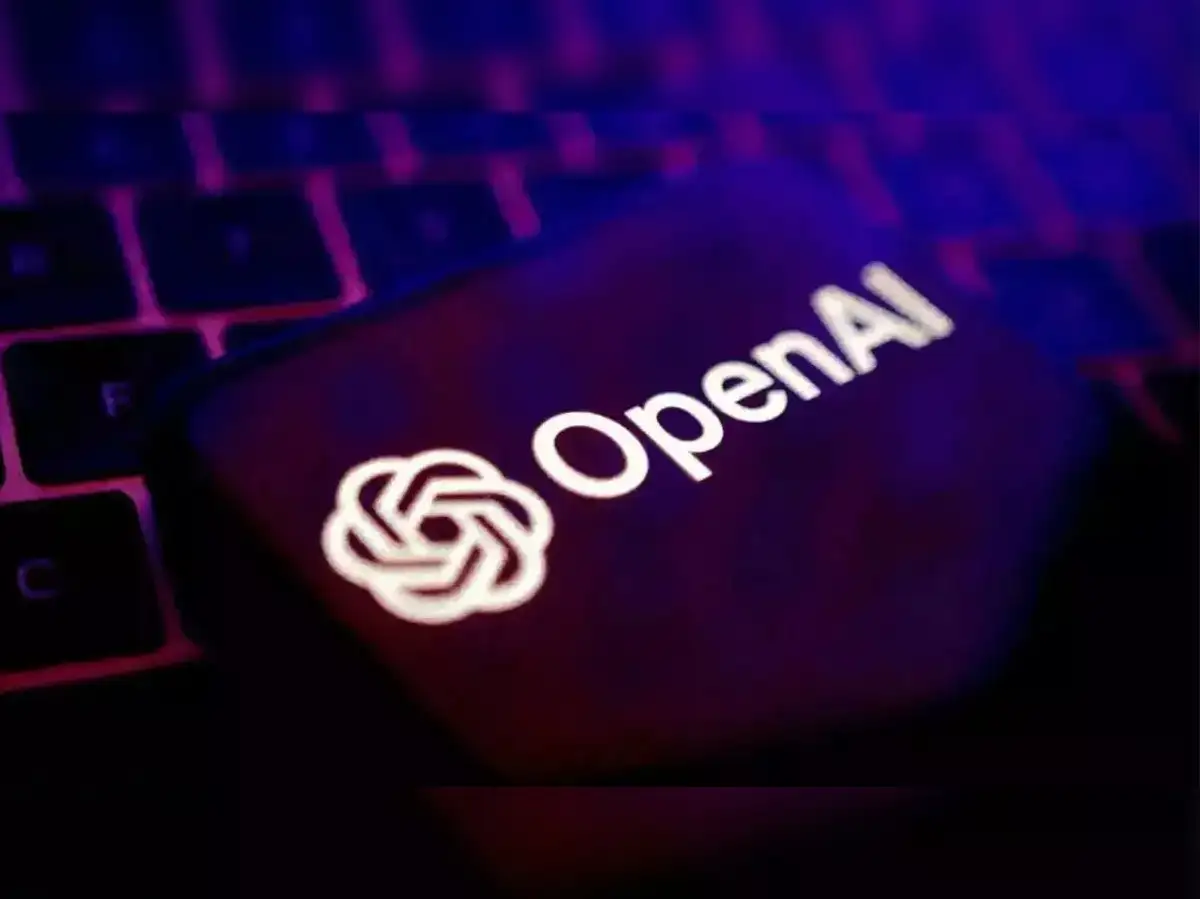ปัญญาประดิษฐ์และขอบฟ้าของเทคโนโลยีสมัยใหม่: จาก EA Sports FC 26 ถึงการสำรองข้อมูลด้วย AI การสอนพิเศษ และภาษาสัตว์
Author: Editorial Team

ปัญญาประดิษฐ์ไม่ใช่ความสนใจเฉพาะกลุ่มอีกต่อไป แต่เป็นเสียงฮัมพื้นหลังที่ทรงอิทธิพลต่อความบันเทิง การตัดสินใจทางธุรกิจ การศึกษา และวิทยาศาสตร์ ปี 2025 ถือเป็นจุดเปลี่ยนที่โครงสร้างพื้นฐานที่ขับเคลื่อนด้วย AI และประสบการณ์ของผู้บริโภคมาบรรจบกันแบบเรียลไทม์ ในวงการเกม การพรีวิวและรายงานอุตสาหกรรมร่วมกับการสนทนาที่กว้างขึ้นเกี่ยวกับวิธีที่ระบบอัจฉริยะปรับประสบการณ์ให้เป็นส่วนบุคคล ปรับประสิทธิภาพการหารายได้ และเร่งวงจรการพัฒนา ในด้านการวิจัย โครงการ AI ที่ทะเยอทะยาน—from การถอดรหัสการสื่อสารของสัตว์ ไปจนถึงการสอนงานให้แรงงาน และการปรับปรุงเวิร์กฟลว์ขององค์กร—เผยให้เห็นระบบนิเวศเทคโนโลยีที่มองว่า AI เป็นความสามารถทั่วไปมากกว่ากล่องประกายแวววาว เนื้อหาที่ถูกรวบรวมจากการพรีวิวเกมในภูมิภาค การวิเคราะห์ทางธุรกิจ และโครงการวิทยาศาสตร์ชี้ให้เห็นเส้นใยร่วมกัน: AI กำลังถูกฝังอยู่ในผ้าทอของชีวิตสมัยใหม่มากขึ้น พร้อมกับขยายโอกาสและตั้งคำถามใหม่เกี่ยวกับคุณค่า การเข้าถึง และความรับผิดชอบ
ในวงการเกม EA Sports FC 26 ได้กลายเป็นจุดสนใจหลักในการถกเถียงระหว่างความสมบูรณ์แบบของเกมกับการหารายได้ผ่านโมเดล monetization เนื้อหาพรีวิวจากภูมิภาคต่างๆ บรรยายว่าเกมนี้เป็นการวิวัฒนาการที่มีความหมายมากกว่าการ reinvention อย่างรุนแรง พวกเขายกย่องการปรับปรุงคุณภาพชีวิตที่ช่วยให้ผู้เล่นทั่วไปควบคุม ปรับแต่ง และเพลิดเพลินกับการแข่งขันได้ลื่นไหลยิ่งขึ้น ในขณะที่ชี้ให้เห็นถึง Season Pass ที่ผลักดันด้วยเงินซึ่งสัญญาว่าจะสร้างรายได้อย่างต่อเนื่องผ่านเครื่องสำอางใหม่ กิจกรรม และการปล่อยคอนเทนต์ ความเห็นโดยรวมจากสื่อต่างๆ ไม่ได้ชี้ว่า กลไกพื้นฐานของฟุตบอล—เช่น จังหวะ การวางตำแหน่ง และยุทธศาสตร์—หายไป แต่บอกว่าวิธีที่ผู้เล่นโต้ตอบกับชื่อเกมถูกกรองผ่านเลนส์ของบริการที่มีชีวิตอยู่ ความผสมผสานนี้—การเล่นหลักที่ถูกปรับให้ดีขึ้นควบคู่กับการเรียงร้อยด้วย monetization ที่ถาวร—สื่อถึงรูปแบบอุตสาหกรรมที่ AI ช่วยให้ประสบการณ์เป็นส่วนบุคคลมากขึ้น ในขณะที่โมเดลธุรกิจโน้มน้าวให้ผู้เล่นมีส่วนร่วมและใช้จ่ายอย่างต่อเนื่อง ผลลัพธ์คือเกมที่ดูเข้าถึงง่ายและมีชีวิตชีวามากขึ้น แต่ก็อาจขึ้นกับการเข้าถึงเนื้อหาที่ต้องชำระเงินอย่างต่อเนื่อง

EA Sports FC 26 official Ultimate Team deep-dive preview highlighting new content, ongoing seasons, and the interplay of polish with monetization hooks.
นอกเหนือจากการสนทนาเกี่ยวกับ EA เรื่องราวในวงกว้างของ AI มุ่งไปที่ข้อเท็จจริงเชิงขนาดและการกำกับดูแล ทั่วภูมิภาคและแพลตฟอร์ม ความนิยมในการพยายามเป็นข้ามแพลตฟอร์ม—ของชื่อเกมที่มีบน Nintendo Switch, Xbox Series X|S, PlayStation และ PC—ย้ำให้เห็นว่าผู้เล่นคาดหวังประสบการณ์ที่สอดคล้องและมีคุณภาพสูงไม่ว่าเล่นที่ไหน นักวิจารณ์ชี้ว่าโมเดลจำลองหลักยังคงยึดอยู่กับการเล่นที่คุ้นเคย แต่กรอบบริการแบบไลฟ์เซอร์วิสเพิ่มบทบาทในการกำกับว่า ผู้เล่นสามารถเข้าถึงอะไร เมื่อไร และที่ราคาเท่าใด ในสภาพแวดล้อมนี้ ระบบ AI ไม่ใช่เพื่อทดแทนมนุษย์ออกแบบ แต่เพื่อจัดการประสบการณ์ที่เป็นส่วนบุคคล ปรับปรุงการจับคู่ กำหนดเนื้อหา และทำให้วงจรป้อนกลับที่นำไปสู่การพัฒนาต่อเนื่องแน่นขึ้น เหตุผลทางเศรษฐกิจชัดเจน: กลไกรายได้ที่ปรับจูนได้ควบคู่กับเกมที่น่าประทับใจและสมบูรณ์จะสามารถรักษาชีวิตการใช้งานและการลงทุนของแฟนๆ ไว้ได้นาน ในขณะเดียวกันก็เชิญข้อกังวลเกี่ยวกับความเป็นธรรม คุณค่า และสวัสดิการของผู้เล่นในระยะยาว
กรอบนี้—การปรับปรุงคุณภาพควบคู่กับประเด็นการหารายได้—ขยายออกไปไกลกว่าพรีวิว IGN Africa และเข้าสู่การอภิปรายที่กว้างขึ้นเกี่ยวกับความบันเทิงที่ขับเคลื่อนด้วย AI กล่าวอีกนัยหนึ่ง เกมกีฬายุคใหม่ไม่ใช่เหตุการณ์ 'ว้าว' เดี่ยวๆ แต่เป็นประสบการณ์ที่มั่นคงและเปลี่ยนแปลงได้ ซึ่งตอบสนองต่อลักษณะพฤติกรรมของผู้เล่นแบบเรียลไทม์ ประสบการณ์นี้กลายเป็นบริการ: ฤดูกาลที่อัปเดต กิจกรรมที่ไดนามิก และไอเทมเครื่องสำอางที่สะท้อนถึงตัวตนและความมุ่งมั่นของผู้เล่น นี่คือการค้า/แลกเปลี่ยนที่หลายสำนักพิมพ์วางเดิมพัน: ข้อมูลมากขึ้น การปรับแต่งมากขึ้น และการปล่อยคอนเทนต์บ่อยขึ้น พร้อมกับรายได้ที่คาดการณ์ได้ เมื่อผู้เล่นแสวงหาสมดุลนี้ อุตสาหกรรมเผชิญกับคำถามสำคัญว่า ประโยชน์ของการปรับเปลี่ยนให้เป็นส่วนตัวด้วย AI สามารถมอบได้โดยไม่ทำลายความเชื่อถือหรือเสียคุณค่าที่ผู้เล่นได้รับจากการเป็นเจ้าของ ความก้าวหน้า และทักษะ

Analysts’ view of how large language models will affect business in 2025, highlighting automation, decision support, and scale.
The conversation around AI in entertainment dovetails with a larger economic narrative: the demand for compute is skyrocketing as models become more capable and installed bases grow. Analysts and industry watchers observe that modern games are not just software experiences but systems that rely on continuous data collection, rapid iteration, and cloud-backed services. This reality—paired with a consumer appetite for rapid updates and personalized interactions—places orchestration at the center of value creation. The result is a hybrid of artistry and engineering where developers must balance creative aims with the economics of ongoing delivery. For players, this means a more compelling door into virtual worlds, but it also places a premium on responsible monetization practices, transparent communication about how data informs experiences, and clear lines of accountability when things go awry.
On the workforce side, new models of collaboration emerge as AI supports and accelerates decision-making. Talent becomes distributed across disciplines—design, data science, marketing, and operations—paired with a growing expectation that AI tools will be part of everyday workflows. The practical effect is that teams can execute more quickly, harness deeper insights, and tackle problems that were previously bottlenecked by manual processes. Yet this acceleration also highlights the need for governance, data hygiene, and skill development so that organizations can leverage AI effectively without compromising security or workforce morale. In short, the AI-enabled enterprise promises increased productivity, but its success hinges on how well people and processes mesh with intelligent systems.

OpenAI’s plan to invest in backup servers and cloud infrastructure to support growing AI workloads.
A parallel thread in AI-enabled work lives in the real world of workforce dynamics. A BizToc digest of Inc. coverage points to Gen-Z workers who increasingly become de facto AI tutors within their organizations. Nearly two-thirds of Gen-Zers volunteer to help older coworkers learn and use AI tools, a trend that accelerates adoption, improves productivity, and elevates the reputation of those who become known as AI champions. This dynamic helps reduce resistance to new technologies, shortens the learning curve for frontline staff, and democratizes access to the most powerful tools in the workplace. At the same time, it raises questions about equity of training responsibilities, the quality of informal guidance, and how much formal training is still necessary. As AI becomes embedded in daily workflows, the question shifts from “can we train people to use AI?” to “who bears responsibility for ensuring accurate, ethical, and consistent use of AI across an organization?”
The consumer side is not far behind in raising concerns about how AI-curated information is presented and consumed. A thoughtful analysis from Zdnet’s Nina Raemont cautions that AI-generated news summaries can do more harm than good if not used judiciously. The piece emphasizes that automated digests should supplement rather than replace careful reading and independent verification. Users are urged to treat AI summaries as starting points, not definitive sources, and to be mindful of biases embedded in data and models. In practice, this means designing AI-assisted news tools that improve comprehension while preserving transparency and accountability, a delicate balance that requires ongoing attention to model behavior, data provenance, and the risk of misinformation seeping through automated summaries.

Earth Species Project’s AI-assisted study of animal sounds could unlock a foundational dictionary of interspecies communication by 2030.
Research at the intersection of AI and biology/linguistics highlights a bold ambition: to decode animal language using machine learning. The Earth Species Project’s mission to map animal vocalizations into a basic dictionary envisions a future where human understanding of animal cognition could transform conservation, ethics, and our relationship with ecosystems. Such a project challenges our assumptions about communication, cognition, and the boundaries of science, pushing researchers to design models that can handle the nuance and diversity of animal signals. The timeline—targeting breakthroughs by 2030—reflects a longer arc of AI-enabled discovery that complements more immediate concerns about user experience, monetization, and governance. Taken together, these threads reveal a world where AI is increasingly deployed not just to automate tasks or deliver personalized media, but to ask big questions about life, language, and meaning.

Analysts’ view of how large language models will affect business in 2025, highlighting automation, decision support, and scale.
The global AI ecosystem is characterized by enormous capital commitments that reveal how central compute has become to the technology agenda. Reports about OpenAI’s spending plans—covering up to $100 billion in the next five years for backup servers, alongside hundreds of billions for ongoing capacity this decade—underscore that AI is now a capital-intensive enterprise. Industry watchers note that cloud providers, data centers, energy consumption, and supply chains for AI infrastructure will shape corporate strategy for years to come. For executives, this translates into strategic decisions about where to locate data, how to procure reliable and scalable compute, and how to align vendor ecosystems with long-term risk management. As models grow larger and more capable, the infrastructure behind them becomes the hidden engine that makes all the glitz and promise possible.
The confluence of these developments—entertainment updates, business tooling, educational innovations, and ambitious science projects—points to an era in which AI is less a single invention and more a pervasive framework. The implications are profound: better games, smarter operations, more capable tutoring, and deeper scientific inquiry can coexist with concerns about access, equity, and safety. The path forward will hinge on how designers, policymakers, and researchers balance innovation with accountability, ensuring that AI delivers genuine value without compromising trust or safety. If 2025 proves anything, it is that AI is moving from experimental novelty to a steady, integrated force across domains, inviting us to rethink what is possible and who bears responsibility for realizing it.